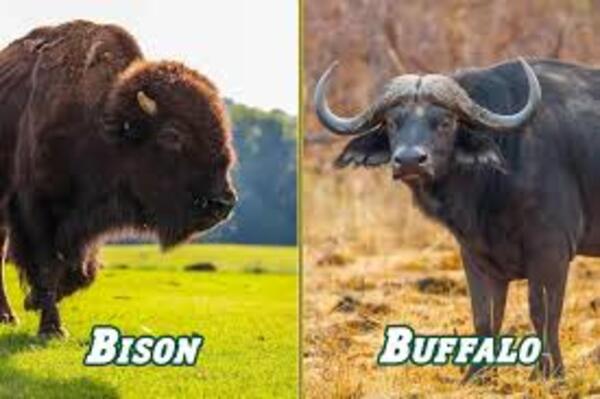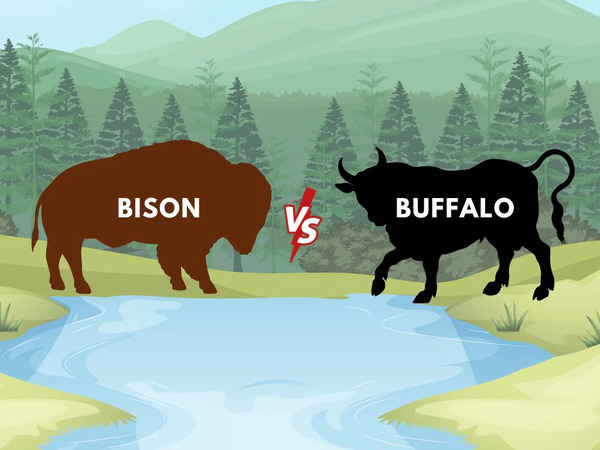When it comes to large, powerful animals, many people often confuse bison and buffalo. While they share similar habitats and impressive physical features, they are quite different species. In this article, we’ll explore the differences between bison and buffalo, compare their strength, and determine which animal is stronger.

Bison are native to North America and Europe. The most well-known species are the American bison and the European bison (also known as wisent). Here are some key features of bison:
Physical Characteristics: Bison have a shaggy, dark brown coat, a large head, and a prominent hump on their shoulders. Adult bison can weigh between 1,000 to 2,200 pounds (450 to 1,000 kg) and stand about 5 to 6 feet tall at the shoulder.
Habitat: Bison typically roam grasslands, prairies, and open plains, where they graze on grasses and other vegetation.
Buffalo primarily refer to two species: the African buffalo and the Asian water buffalo. Each species has its unique traits:
African Buffalo: Known for their massive, curved horns and social behavior, African buffalo are found in various habitats across sub-Saharan Africa.
Asian Water Buffalo: This species is often domesticated and used for agricultural purposes in Asia. They have large, sweeping horns and are typically found in wetlands and rice paddies.
When comparing the physical strength of bison and buffalo, both animals are incredibly powerful, but they have different types of strength:
Bison Strength: Bison are known for their impressive muscular build and robust bodies. Their large shoulders and heavy heads allow them to charge at great speed and exert tremendous force. Bison are capable of running up to 40 miles per hour (64 km/h) over short distances.
Buffalo Strength: Buffalo, particularly African buffalo, are also strong and resilient animals. They have thick, powerful bodies and strong legs that help them navigate challenging terrains. African buffalo can weigh up to 1,500 pounds (680 kg) and can be quite aggressive when threatened.
Behavior also plays a significant role in strength:
Bison Behavior: Bison are generally more solitary, although they do form herds during migration. They can be defensive, especially if they feel threatened, and can charge with little warning.
Buffalo Behavior: Buffalo are known for their social nature and often live in large herds. This herd behavior provides strength in numbers, allowing them to fend off predators more effectively. African buffalo, in particular, are known for their fierce defense of their young and sick members.

In the battle of strength between bison and buffalo, it ultimately depends on the context.
Bison: With their massive size and charging power, bison are incredibly strong and formidable animals in open plains.
Buffalo: On the other hand, buffalo are known for their social structure and defensive capabilities, particularly when in herds.
Overall, while both animals are strong in their own right, bison may have the edge in terms of sheer size and physical power. However, buffalo’s collective strength in herds should not be underestimated. Each animal has adapted to its environment in unique ways, making them powerful in different contexts.
Understanding these differences enriches our appreciation of these magnificent creatures and their roles in their respective ecosystems.
We created this article in conjunction with AI technology, then made sure it was fact-checked and edited by a Animals Top editor.